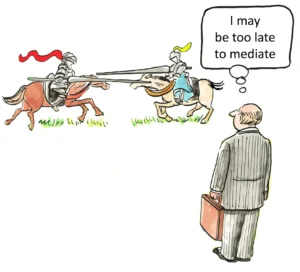Warrantless Searches: When Police Can Act Without Permission
The Fourth Amendment to the United States Constitution stands as a bulwark against unreasonable searches and seizures by government authorities. This fundamental protection requires law enforcement to obtain a warrant, supported by probable cause, before conducting most searches. However, the Supreme Court has recognized several exceptions to this warrant requirement, allowing police to act without prior judicial authorization in certain circumstances. This article examines the legal landscape surrounding warrantless searches, exploring when and how law enforcement can lawfully conduct searches without obtaining a warrant.
The cornerstone of Fourth Amendment jurisprudence is the principle that warrantless searches are presumptively unreasonable. As the Supreme Court has repeatedly affirmed, “searches conducted outside the judicial process, without prior approval by judge or magistrate, are per se unreasonable under the Fourth Amendment—subject only to a few specifically established and well-delineated exceptions.” This presumption places the burden on the government to justify warrantless intrusions.
Despite this strong preference for warrants, courts have carved out several exceptions based on practical necessities and competing public interests. These exceptions recognize that in some situations, the warrant requirement would frustrate legitimate law enforcement needs or endanger public safety. The challenge lies in striking the proper balance between individual privacy rights and effective crime control.
One of the most frequently invoked exceptions is exigent circumstances. This doctrine allows police to conduct warrantless searches when an emergency situation requires immediate action to prevent physical harm, destruction of evidence, or a suspect’s escape. For instance, officers may enter a home without a warrant if they hear screams coming from inside or observe a violent altercation through a window. The key inquiry is whether, given the totality of the circumstances, a reasonable officer would believe that immediate action was necessary.
Courts evaluate exigent circumstances claims on a case-by-case basis, considering factors such as the gravity of the underlying offense, whether the suspect is armed, and the likelihood that evidence will be destroyed. Importantly, police cannot manufacture exigency through their own actions. If officers deliberately create the emergency situation to justify a warrantless entry, courts will likely find the search unconstitutional.
The hot pursuit doctrine is a specific application of exigent circumstances. When police are in hot pursuit of a fleeing suspect, they may follow the suspect into a private residence or other area without stopping to obtain a warrant. This exception recognizes that requiring officers to halt their chase and seek judicial authorization would often allow suspects to escape or destroy evidence. However, the pursuit must be immediate and continuous; a significant delay or break in the chase may negate this exception.
Another well-established exception is the search incident to arrest. When making a lawful arrest, police may search the arrestee’s person and the area within their immediate control without a warrant. This search serves two important purposes: officer safety (by locating weapons) and preservation of evidence. The scope of this search is limited to the arrestee’s person and the area within their immediate grabbing distance at the time of arrest.
In the context of vehicle searches, the Supreme Court has recognized a distinct automobile exception to the warrant requirement. This exception is based on the inherent mobility of vehicles and the reduced expectation of privacy in automobiles compared to homes. Under this doctrine, if police have probable cause to believe a vehicle contains evidence of criminal activity, they may search the entire vehicle and any containers within it that might conceal the object of the search. This exception applies even if the vehicle is no longer mobile (e.g., impounded) at the time of the search.
The plain view doctrine allows officers to seize evidence or contraband they observe in plain sight from a lawful vantage point. For example, if an officer legitimately enters a home (with a warrant or under another exception) and sees drugs on a table, those drugs can be seized without an additional warrant. The key requirements are that the officer must be lawfully present in the area and the incriminating nature of the item must be immediately apparent.
Consent searches represent another significant exception to the warrant requirement. If an individual voluntarily consents to a search, police may conduct that search without a warrant or probable cause. The consent must be freely and voluntarily given, not the result of coercion or duress. Courts examine the totality of the circumstances to determine whether consent was voluntary, considering factors such as the individual’s age, education, intelligence, and whether they were informed of their right to refuse consent.
In certain contexts, courts have upheld suspicionless searches based on special needs beyond ordinary law enforcement. Examples include sobriety checkpoints, airport security screenings, and searches in schools. These searches are justified by compelling governmental interests that outweigh the individual’s privacy expectations in those specific settings. However, the scope of such searches is typically limited to the special need at hand and cannot be used as a pretext for general criminal investigation.
The border search exception allows for warrantless searches of individuals and property at international borders or their functional equivalent (e.g., international airports). This exception is grounded in the government’s sovereign authority to control who and what enters the country. Routine border searches require no individualized suspicion, while more intrusive searches (such as strip searches or x-rays) may require reasonable suspicion.
Administrative searches of closely regulated businesses represent another category of warrantless inspections. Industries subject to pervasive regulation (e.g., firearms dealers, liquor stores) have a reduced expectation of privacy, and warrantless inspections may be necessary to ensure compliance with regulatory schemes. However, these searches must be conducted pursuant to established, neutral criteria and cannot be used as a pretext for criminal investigations.
The inventory search doctrine permits law enforcement to conduct warrantless searches of impounded vehicles or other property taken into police custody. These searches serve administrative purposes such as protecting the owner’s property, safeguarding police from false claims of theft, and identifying potential dangers. To be valid, inventory searches must follow standardized procedures and cannot be used as a ruse for investigative searches.
While these exceptions provide law enforcement with significant latitude to conduct warrantless searches, it is crucial to recognize their limitations. Each exception has specific requirements and boundaries that police must respect. Moreover, the burden remains on the government to prove that a warrantless search falls within one of these recognized exceptions.
Courts carefully scrutinize warrantless searches to ensure they do not become the rule rather than the exception. When police exceed the scope of a recognized exception or conduct a search that does not fit within any established doctrine, the exclusionary rule may bar the use of any evidence obtained. This rule, which prohibits the use of illegally obtained evidence in court, serves as a powerful deterrent against Fourth Amendment violations.
The landscape of warrantless search law continues to evolve as courts grapple with new technologies and changing societal expectations of privacy. For instance, the Supreme Court has recently addressed how the Fourth Amendment applies to cell phone searches incident to arrest and the use of GPS tracking devices. These decisions reflect an ongoing effort to adapt traditional Fourth Amendment principles to the digital age.
One area of particular concern is the application of the third-party doctrine in the context of digital information. This doctrine holds that individuals have no reasonable expectation of privacy in information voluntarily shared with third parties, such as phone companies or banks. However, the vast amount of personal data now held by technology companies has led some justices to question whether this doctrine should be reevaluated.
The community caretaking function is another doctrine that has generated significant debate. This exception allows police to conduct warrantless searches when acting in their role as community caretakers, rather than as criminal investigators. For example, officers might enter a home without a warrant to check on the welfare of an elderly resident who hasn’t been seen for days. However, the scope and limits of this exception remain somewhat unclear, with circuit courts split on its application to warrantless home entries.
The intersection of warrantless searches and emerging technologies presents ongoing challenges for courts and legislators. As law enforcement increasingly employs sophisticated surveillance tools like facial recognition software, drones, and cell-site simulators (stingrays), questions arise about whether their use constitutes a search under the Fourth Amendment and, if so, whether warrants should be required.
The good faith exception to the exclusionary rule adds another layer of complexity to warrantless search jurisprudence. This doctrine allows evidence obtained through an illegal search to be admitted if the officers acted in good faith reliance on a warrant that later proved to be invalid. Some courts have extended this principle to warrantless searches, creating tension with the general rule that warrantless searches are presumptively unreasonable.
The concept of curtilage plays a crucial role in determining the scope of Fourth Amendment protection against warrantless searches. Curtilage refers to the area immediately surrounding a home that is considered part of the home for Fourth Amendment purposes. Courts use a four-factor test to determine whether an area constitutes curtilage: proximity to the home, whether the area is enclosed, the nature of its use, and steps taken to protect it from observation. Warrantless searches within the curtilage are generally prohibited absent an applicable exception.
The open fields doctrine, in contrast, holds that open areas beyond the curtilage of a home are not protected by the Fourth Amendment. Police may enter and search such areas without a warrant, even if they are on private property. This doctrine is based on the rationale that individuals do not have a reasonable expectation of privacy in open areas visible to the public.
Protective sweeps represent another limited exception to the warrant requirement. When making an arrest in a home, police may conduct a quick and limited search of spaces where a person could be hiding if they have reasonable suspicion that a dangerous individual may be present. This exception is narrowly tailored to protect officer safety during arrests.
The emergency aid doctrine allows police to enter a home without a warrant when they have an objectively reasonable basis to believe that immediate entry is necessary to render emergency assistance to an injured occupant or to protect an occupant from imminent injury. This exception is distinct from exigent circumstances related to criminal activity and focuses on the need to protect life or prevent serious injury.
Probation and parole searches present unique considerations in the realm of warrantless searches. Individuals on probation or parole often have diminished Fourth Amendment rights as a condition of their release. Courts have generally upheld warrantless searches of probationers and parolees based on reasonable suspicion, and in some cases, even suspicionless searches if agreed to as a condition of release.
The plain smell doctrine extends the plain view concept to odors detectable by law enforcement. If an officer is lawfully present in an area and detects the odor of contraband (e.g., marijuana), this may provide probable cause for a warrantless search. However, the application of this doctrine has become more complex in jurisdictions that have legalized or decriminalized marijuana possession.
Knock and talk investigations, where police approach a residence to speak with occupants, can sometimes lead to warrantless searches. While officers are generally permitted to approach a home’s entrance like any member of the public, courts scrutinize whether subsequent interactions and any resulting searches were truly consensual or whether they exceeded the scope of the implied license to approach.
The inevitable discovery doctrine allows for the admission of evidence obtained through an illegal warrantless search if the prosecution can demonstrate that the evidence would have inevitably been discovered through lawful means. This exception aims to put the police in the same position they would have been in had no misconduct occurred, without providing an incentive for future violations.
Exigent circumstances in the context of blood draws for drunk driving investigations have been the subject of significant litigation. While the natural dissipation of alcohol in the bloodstream can create exigency, the Supreme Court has held that this factor alone does not automatically justify a warrantless blood draw. Officers must consider the totality of the circumstances, including the ease of obtaining a warrant, before proceeding without judicial authorization.
The application of the exclusionary rule to warrantless searches continues to evolve. While the rule remains a primary mechanism for deterring Fourth Amendment violations, the Supreme Court has recognized various exceptions and limitations. For instance, the attenuation doctrine allows for the admission of evidence obtained following a Fourth Amendment violation if the connection between the illegal action and the discovery of the evidence is sufficiently attenuated.
Warrantless searches of electronic devices at the border have become increasingly controversial. While the border search exception generally allows for suspicionless searches, some courts have required at least reasonable suspicion for forensic examinations of smartphones and laptops, given the vast amount of personal information they contain.
The concept of standing in Fourth Amendment cases affects who can challenge a warrantless search. Generally, individuals must demonstrate a legitimate expectation of privacy in the place searched or item seized to have standing to contest the search. This requirement can create complex situations, particularly in cases involving shared spaces or borrowed property.
Anticipatory warrants represent an interesting intersection of warrant and warrantless search doctrines. These warrants are based on an affidavit showing probable cause that at some future time evidence of a crime will be at a specified location. While technically a warrant-based search, the triggering condition often involves observations that would justify a warrantless search under an exception like plain view.
The collective knowledge doctrine, also known as the fellow officer rule, allows the collective knowledge of law enforcement agencies to be imputed to individual officers conducting a search. This doctrine can sometimes justify warrantless searches based on information known to other officers, even if the searching officer is not personally aware of all the facts establishing probable cause.
Warrantless searches in the context of national security and counterterrorism efforts present unique challenges. While courts have recognized some latitude for warrantless searches in these areas, the exact contours of Fourth Amendment protections in national security contexts remain somewhat unclear, particularly regarding electronic surveillance.
The intersection of warrantless searches and privacy rights in shared living spaces, such as dormitories or communal housing, raises complex legal questions. Courts must balance the privacy expectations of individual residents against the authority of property owners or administrators to consent to searches of common areas.
Warrantless searches of abandoned property generally do not violate the Fourth Amendment, as individuals are deemed to have relinquished their expectation of privacy in discarded items. However, determining when property has been truly abandoned, particularly in the digital context (e.g., deleted files or closed social media accounts), can be challenging.
The application of warrantless search exceptions to smart home devices and Internet of Things (IoT) technologies is an emerging area of Fourth Amendment jurisprudence. As these devices collect and transmit increasing amounts of data about our daily lives, courts must grapple with questions of privacy expectations and the scope of consent when devices are shared among household members.
Warrantless searches in the context of civil forfeiture proceedings have drawn scrutiny from courts and lawmakers. The practice of seizing property suspected of being connected to criminal activity without a warrant has been criticized for potential abuse, leading some jurisdictions to impose stricter requirements on law enforcement.
The use of drug-sniffing dogs in warrantless searches has been the subject of several Supreme Court decisions. While the Court has held that a dog sniff is not itself a search under the Fourth Amendment, the use of dogs to detect drugs in homes and at traffic stops is subject to certain limitations to prevent unreasonable intrusions on privacy.
Warrantless searches of commercial premises involve a balance between privacy interests and regulatory needs. While businesses generally have a reduced expectation of privacy compared to residences, the scope of permissible warrantless administrative inspections is not unlimited and must be tailored to the specific regulatory scheme.
The concept of prolonged surveillance as a potential search requiring a warrant has gained attention in recent years. While traditional surveillance techniques may not constitute a search, the use of advanced technologies to conduct long-term, comprehensive monitoring may implicate Fourth Amendment protections even in public spaces.
Warrantless searches in the context of school safety present unique challenges in balancing students’ privacy rights with the need to maintain a safe learning environment. Courts have generally allowed school officials greater latitude in conducting searches than law enforcement officers, but such searches must still be reasonable in scope and justified at their inception.
The intersection of warrantless searches and medical privacy raises complex legal and ethical issues. While law enforcement may sometimes access medical records or conduct searches in healthcare settings without a warrant under exigent circumstances or consent exceptions, such actions are subject to strict scrutiny given the sensitive nature of medical information.
Warrantless searches of digital communications stored by third-party service providers have become increasingly relevant in the modern era. The application of the third-party doctrine to emails, text messages, and social media content remains a contentious issue, with some courts and legislatures moving towards requiring warrants for access to certain types of electronic communications.
The use of geofence warrants, which request data on all devices within a specific area and time frame, has raised concerns about overbroad searches that may not meet the particularity requirement of the Fourth Amendment. While not strictly warrantless, these searches highlight the challenges of applying traditional Fourth Amendment principles to modern surveillance technologies.
In conclusion, the landscape of warrantless searches under the Fourth Amendment is complex and continually evolving. While exceptions to the warrant requirement provide law enforcement with necessary flexibility in certain situations, they must be carefully balanced against individual privacy rights. As technology advances and societal expectations of privacy shift, courts will undoubtedly continue to refine and adapt Fourth Amendment doctrine to address new challenges in the realm of searches and seizures.
Sources:
- https://www.law.cornell.edu/wex/warrantless
- https://constitution.congress.gov/browse/essay/amdt4-6-3/ALDE_00013720/
- https://www.law.cornell.edu/wex/unreasonable_search_and_seizure
- https://www.notguiltyadams.com/blog/exceptions-to-the-search-warrant-requirement.cfm
- https://www.law.cornell.edu/wex/fourth_amendment
- https://attorneys.media/search-and-seizure-laws/
- https://attorneys.media/search-seizure-laws-rights/
- https://www.fletc.gov/sites/default/files/imported_files/training/programs/legal-division/downloads-articles-and-faqs/research-by-subject/4th-amendment/searchingavehicle-carroll.pdf
- https://en.wikipedia.org/wiki/Warrantless_searches_in_the_United_States
- https://attorneys.media/glossary/detention-laws/


















